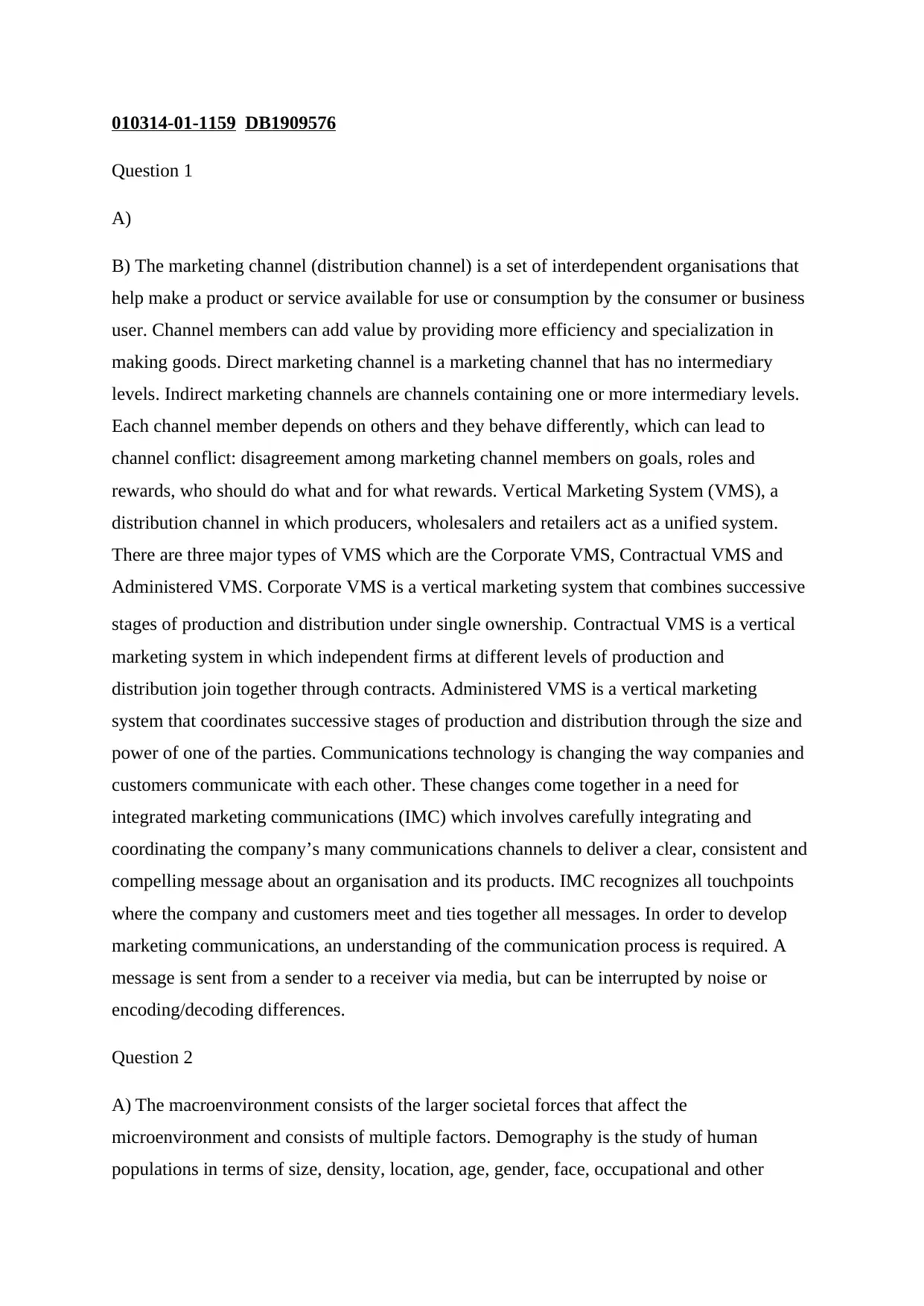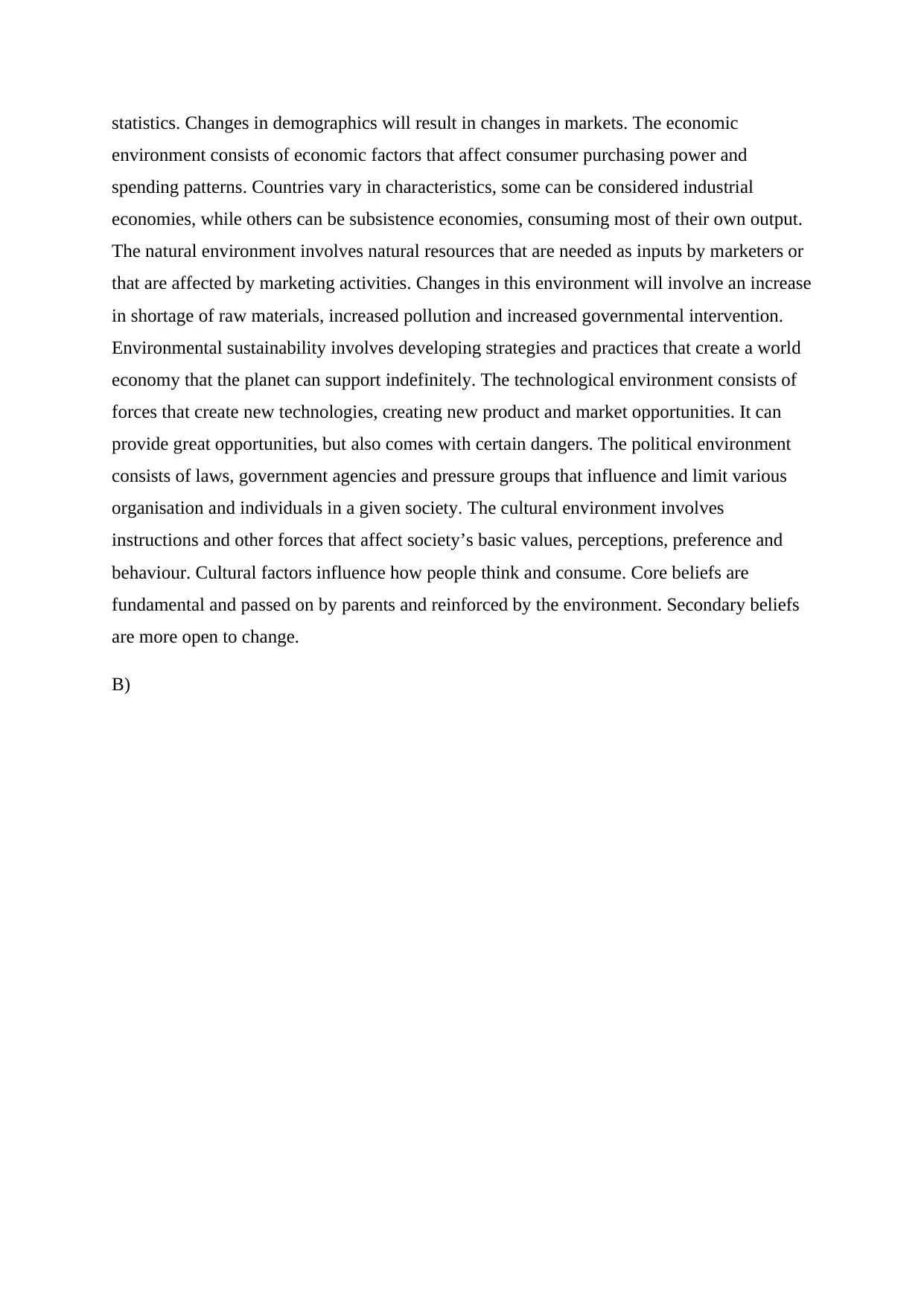Detailed Report: Marketing Channels, Communications, and Environment
VerifiedAdded on 2020/11/02
|2
|615
|41
Report
AI Summary
This report delves into the intricacies of marketing channels, exploring both direct and indirect approaches, and the role of intermediaries. It examines the vertical marketing system (VMS), including corporate, contractual, and administered VMS models, highlighting their impact on distribution and efficiency. Furthermore, the report discusses integrated marketing communications (IMC), emphasizing the importance of consistent messaging across various communication channels and the influence of the communication process. Additionally, the report analyzes the macroenvironment, including demographic, economic, natural, technological, political, and cultural factors, and their effects on consumer purchasing power, market dynamics, and business strategies. It emphasizes the importance of environmental sustainability and the influence of cultural factors on consumer behavior.
1 out of 2








![[object Object]](/_next/static/media/star-bottom.7253800d.svg)